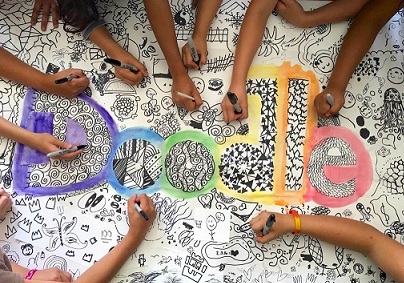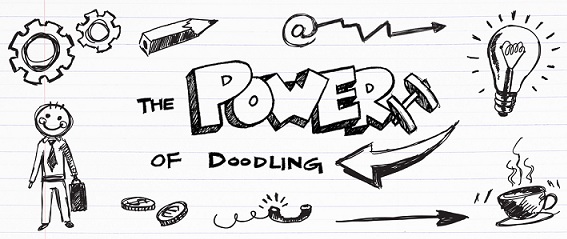Products You May Like
While doodling has been defined as “drawing or scribbling aimlessly,” I couldn’t disagree more. If you can believe it, doodling has the capacity to improve memory, focus, and cognition.
Many researchers suggest doodling is much more than a fruitless endeavor or a pointless waste of time.
Visit your local gift or bookshop and you’ll find a slew of journals and sketchpads promising to help stressed-out adults get in touch with their creative side. In the modern world, people are more overwhelmed than ever.
Information and opportunities abound. However, this abundance can lead to stress and a lack of focus. Research suggests doodling can calm us, help us process information, and act as a tool for creative problem-solving.
Serious doodling actually creates a measurable change in your physical and neurological states.
In an article in The Atlantic, author Steven Heller explains, “Drawing with pencil, pen, or brush on paper isn’t just for artists. For anyone who actively exercises the brain, doodling and drawing are ideal for making ideas tangible.” Imagine the impact this could have on student learning!
Doodling Doesn’t Mean Disconnecting
While doodlers might appear inattentive to onlookers, this is rarely the case. Researchers tell us doodlers are most likely trying to make abstract concepts concrete with images, or they might be processing the information they are being given, filling in the gaps of their understanding.
What’s more, according to a study published in the Journal of Applied Cognitive Psychology, doodlers find it easier to recall dull information than non-doodlers, because the latter are more likely to daydream. Suddenly, doodling’s bad rap feels undeserved, and more than a little unfair, no?
Doodling as an Academic Asset
The research doesn’t stop there! According to this article from the Huffington Post, Jackie Andrade, a psychology professor at Plymouth University who studied doodlers, found, “Doodling engages the brains executive resources’ — processes that help us plan, multi-task and concentrate.
Engaging our executive resources with doodles while we’re listening to a lecture or phone call makes sure that those resources don’t wander off on their own to think about the grocery list or our plans for the weekend.” Encouraging students to doodle during note-taking might actually increase their retention.
The same article also mentions the work of Jesse Prinz, a philosophy professor at the City University of New York Graduate Center who studies doodling in the context of art research, found the practice is optimally suited for oral learning. He says doodling keeps people in a state of “pure listening.” That sounds like information teachers need to know and use.
The Power of the Doodle
For those of you who say doodling isn’t art, you are missing the point. It is a form of expression that, says Heller, “often triggers insights and discoveries that aren’t possible through words alone. Just think of all those napkins (or Post-Its) on which million-dollar ideas were sketched out.” As art teachers, we should be teaching our students not just to make art, but how to think artistically and develop ideas and understandings in all kinds of capacities.
doodle with Sharpie
I’m reminded of a Picasso quote, “All children are artists. The problem is how to remain one once we grow up.” Doodling is one way all people – artistically inclined or not – can remain visual thinkers. We should never forget the power of losing ourselves on a blank page. As Sue Shellenbarger of The Wall Street Journal says, “A blank page can serve as an extended playing field for the brain, allowing people to revise and improve on creative thoughts and ideas.”
Doodling is a powerful tool. One that can help our students process complex ideas. Maybe we should all be doing a bit more doodling.

